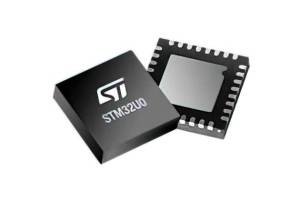Zener diodes are fundamental electronic components renowned for their exceptional properties, making them indispensable in numerous practical applications. Whether you have a passion for electronics, are a student studying the subject, or a professional engineer, acquiring a comprehensive understanding of Zener diodes is crucial.
This blog post will provide you with a thorough overview of Zener diodes, delving into their working principles, diverse applications across various industries, limitations to be aware of, and vital factors to consider during their selection.
What are Zener Diodes?
Zener diodes are specialized diodes designed to operate in the reverse breakdown region, where they maintain a constant voltage across their terminals known as the Zener voltage. These diodes are unique in their ability to regulate voltage and provide protection in electronic circuits.
By leveraging the reverse breakdown phenomenon, Zener diodes allow current to flow in the reverse direction once the breakdown voltage is reached. This distinct characteristic makes them valuable for applications requiring precise voltage references, voltage clamping, and transient suppression.
Construction of a Zener Diode
The construction of a Zener diode is similar to a regular diode, consisting of a P-N junction formed by doping a semiconductor material. However, the Zener diode is heavily doped to create a thin depletion region, enabling it to sustain high electric fields during reverse biasing.
This depletion region acts as a voltage reference, allowing the Zener diode to maintain a stable voltage across its terminals even with varying currents. The unique construction of the Zener diode makes it an essential component in voltage regulation and protection circuits.
Working of Zener Diode
A Zener diode operates in the reverse breakdown region and is designed to maintain a constant voltage across its terminals known as the Zener voltage. When a Zener diode is reverse biased, it initially blocks current flow.
However, as the reverse voltage across the diode increases, it reaches the Zener voltage or breakdown voltage (VZ). At this point, the Zener effect occurs, allowing the diode to conduct current in the reverse direction while keeping a relatively constant voltage drop. This characteristic makes Zener diodes useful for voltage regulation and protection in electronic circuits.
The Zener effect is a result of the unique structure and doping of the diode, creating a high electric field across the depletion region. During Zener breakdown, the electric field generates a significant number of electron-hole pairs that cross the depletion region through quantum tunneling.
Importantly, the voltage across the Zener diode remains nearly constant in the breakdown region due to its steep voltage-current characteristic. This stability enables Zener diodes to provide a consistent voltage output despite changes in load current or input voltage.
Unique Features of Zener Diodes
Zener diodes possess several distinctive features that set them apart from regular diodes:
- Reverse Breakdown Operation: Unlike regular diodes that primarily operate in the forward bias region, Zener diodes are specifically designed to handle reverse breakdown voltages without being damaged.
- Precise Voltage Regulation: Zener diodes excel at providing accurate voltage regulation. By selecting a Zener diode with a specific breakdown voltage (VZ), a stable voltage reference can be obtained even with fluctuations in load or input voltage.
- Steep Voltage-Current Characteristic: Zener diodes exhibit a steep voltage-current characteristic in the breakdown region. This means that even a small change in current results in minimal variation in the voltage across the diode, leading to better voltage regulation.
- Wide Range of Breakdown Voltages: Zener diodes are available in a wide range of breakdown voltages, making it possible to choose the appropriate diode for various voltage regulation requirements.
- Overvoltage Protection: Zener diodes can act as voltage limiters or clamps, preventing voltage spikes from reaching sensitive components by conducting heavily in the reverse direction when the voltage exceeds the breakdown voltage (VZ).
- Fast Response Time: Zener diodes have a quick response time, making them suitable for applications where rapid voltage regulation or transient suppression is necessary. They can swiftly react to changes in the input voltage and maintain a stable output.
- Compact and Cost-Effective: Zener diodes are relatively small and cost-effective compared to other voltage regulation components, making them an efficient solution for many electronic circuits and devices.
Key Factors to Consider When Choosing Zener Diodes
To effectively use a Zener diode in your circuit, careful selection and consideration of circuit parameters are necessary. This stepwise guide will walk you through the process of selecting and integrating a Zener diode into your circuit for optimal voltage regulation.
- Determine the Required Voltage Regulation:
Identify the specific voltage regulation requirements of your circuit. Determine the desired output voltage and the acceptable voltage variation or tolerance.
- Calculate the Required Zener Voltage:
Subtract the desired output voltage from the input voltage or power supply voltage to find the voltage drop across the Zener diode. This will give you the required Zener voltage (VZ).
- Choose the Zener Diode:
Look for a Zener diode with a breakdown voltage (VZ) that closely matches your required voltage. Consider factors such as availability, cost, and package size.
- Check the Power Rating:
Calculate the power dissipation (P) across the Zener diode using the formula P = VZ * IZ, where IZ is the Zener current. Ensure that the selected Zener diode can handle the calculated power without exceeding its maximum power rating.
- Verify the Zener Current:
Determine the Zener current (IZ) required for proper operation. It is typically recommended to operate the Zener diode at a current level between 5% and 10% of its rated maximum Zener current (IZM).
- Select the Series Resistor:
Calculate the value of the series resistor (RS) using Ohm's Law: RS = (VIN - VZ) / IZ, where VIN is the input voltage. Choose a resistor value that is closest to the calculated value and is readily available in the standard resistor values.
- Consider Power Dissipation in the Series Resistor:
Calculate the power dissipation (PR) in the series resistor using the formula PR = (VIN - VZ) * IZ. Make sure the selected resistor can handle this power without exceeding its power rating.
- Add Filtering Capacitor:
Depending on the application, you may need to add a filtering capacitor across the Zener diode to smooth out any voltage variations caused by AC ripple or noise. The value of the capacitor can be determined based on the desired ripple voltage and the frequency of the input signal.
- Ensure Proper Heat Dissipation:
Zener diodes can generate heat during operation, especially if they are dissipating a significant amount of power. Ensure that the Zener diode and any associated components are adequately heat-sinked or cooled to prevent overheating.
- Test and Verify:
Once the Zener diode and supporting circuitry are assembled, test the circuit to verify the desired voltage regulation and stability. Monitor the output voltage and check for any deviations or anomalies.
Remember to refer to the datasheet of the selected Zener diode for detailed specifications, operating conditions, and application guidelines. Additionally, consider any specific requirements or constraints of your circuit and make necessary adjustments accordingly.
Note: It is advisable to consult an experienced engineer or reference reliable resources when designing and implementing circuits involving Zener diodes, especially for complex or critical applications.
Applications of Zener Diode
While other components may provide some similar functionalities, Zener diodes excel in offering precise, stable, and controllable performance in these specific applications:
Voltage Regulation
Zener diodes are crucial for voltage regulation as they can maintain a constant voltage across a load despite fluctuations in the input voltage. Unlike other components, Zener diodes operate in the reverse breakdown region, where they exhibit a well-defined breakdown voltage.
This characteristic allows them to act as voltage regulators by shunting excess current when the voltage exceeds the breakdown voltage. Their ability to provide precise and stable voltage regulation makes them superior to other passive components like resistors or capacitors, which cannot actively regulate voltage levels.
Voltage Reference
Zener diodes are highly useful as voltage references due to their ability to maintain a stable voltage output. They have a specific breakdown voltage, typically specified with a small tolerance.
This property enables them to provide a reliable reference voltage that remains constant across variations in temperature, supply voltage, and load conditions. Compared to other voltage reference sources, such as resistors or bandgap references, Zener diodes offer better accuracy, stability, and temperature compensation.
Overvoltage Protection
Zener diodes play a vital role in protecting sensitive electronic components from overvoltage conditions. When a voltage spike occurs, the Zener diode conducts and diverts the excess voltage to ground, preventing it from reaching the components being protected.
This feature is particularly advantageous as Zener diodes exhibit a sharp breakdown characteristic, allowing them to rapidly clamp the voltage to a safe level. Other protective devices like fuses or transient voltage suppressors (TVS diodes) may provide protection but do not offer the same precise voltage clamping capability.
Voltage Stabilization
Zener diodes are exceptionally useful for stabilizing voltages in electronic circuits. Due to their reverse breakdown behavior, Zener diodes can compensate for voltage fluctuations caused by changes in temperature, supply voltage, or load conditions.
As a result, they help maintain a stable output voltage within a specific range. This feature is particularly advantageous in applications where a stable voltage source is required, such as in precision instruments or sensor circuits. In contrast, passive voltage stabilization methods like resistors or capacitors cannot actively regulate voltage levels in the same precise manner.
Signal Clipping and Clamping
Zener diodes find widespread use in signal processing applications, such as signal clipping and clamping. In signal clipping, the Zener diode limits the voltage amplitude of a signal by conducting when the voltage reaches the breakdown voltage.
This ensures that the signal does not exceed a specific voltage level. In signal clamping, the Zener diode shifts the entire signal waveform to a different voltage level by acting as a reference point. These functionalities are unique to Zener diodes and cannot be easily replicated using other diodes or passive components.
Waveform Shaping
Zener diodes are employed for waveform shaping by selectively allowing certain voltage ranges to pass while clamping or blocking others. This capability makes them useful in applications like voltage multipliers, pulse generators, and oscillators.
By utilizing the Zener diode's breakdown characteristics, designers can modify and shape waveforms to meet specific requirements. Other components, such as resistors or capacitors, do not possess the same inherent breakdown behavior and cannot shape waveforms in the same controlled manner.
Frequency Stabilization
Zener diodes are valuable in stabilizing the frequency of oscillators by providing a stable reference voltage. By incorporating a Zener diode in the feedback network of an oscillator circuit, it ensures that the output frequency remains constant despite variations in temperature or power supply.
The stability and precision offered by Zener diodes are advantageous compared to other frequency stabilization methods that rely on passive components, which may be more susceptible to variations in temperature or supply voltage and may not provide the same level of frequency stability as Zener diodes.
Noise Generation
Zener diodes can generate random electrical noise signals, which find applications in fields like telecommunications, cryptography, and random number generation. When operated in the reverse breakdown region, Zener diodes exhibit an avalanche breakdown effect, which generates random electrical noise.
This noise can be utilized for various purposes, such as generating random numbers for encryption algorithms or introducing randomness in communication systems. Other noise generation techniques, such as resistors or amplifiers, do not provide the same level of inherent randomness as Zener diodes.
Current Limiting
Zener diodes can act as current limiters in circuits to protect components from excessive current flow. By connecting a Zener diode in series with a load, it regulates the current passing through the load.
When the current exceeds a certain threshold, the Zener diode enters the breakdown region and limits the current flow. This protects the load from damage due to overcurrent conditions. While other components like resistors or fuses can also limit current, Zener diodes offer precise control and can handle larger currents without degrading their performance.
Types of Zener Diode
Let's explore the types of Zener diodes available in the market, each with its unique characteristics and applications.
Standard Zener Diodes
Standard Zener diodes are the most commonly used type of Zener diodes. They are available in a wide range of breakdown voltages and power ratings. Standard Zener diodes are suitable for general-purpose voltage regulation applications where moderate precision is required.
Zener Diode Arrays
Zener diode arrays are integrated circuits that consist of multiple Zener diodes in a single package. These arrays offer the advantage of space-saving and reduced component count. They are commonly used in applications where multiple voltage references or voltage clamping functions are needed.
Surface Mount Zener Diodes
Surface mount Zener diodes (SMD) are designed for surface mount technology (SMT) applications. They come in compact packages and are suitable for densely populated circuit boards. Surface mount Zener diodes are widely used in modern electronic devices, such as smartphones, tablets, and other portable devices.
Zener Diodes with Tight Tolerance
Zener diodes with tight tolerance are manufactured with higher precision to provide more accurate voltage regulation. These diodes have narrower tolerances in terms of their breakdown voltage, allowing for finer control over the regulated voltage. They are commonly used in critical applications where precise voltage references are essential, such as in measurement and instrumentation circuits.
Zener Diode Testing and Measurement
When working with Zener diodes, it is essential to perform testing and measurements to ensure their proper functioning and characteristics. The following are key tests and measurements commonly conducted on Zener diodes:
Forward Voltage Drop Test
This test helps determine the forward voltage drop of a Zener diode. It involves applying a forward bias voltage to the diode within its specified limits and measuring the voltage across it. The measured voltage should be within the expected range, typically a few hundred millivolts.
Reverse Leakage Current Test
The reverse leakage current test evaluates the amount of current that flows through the Zener diode when it is reverse biased. By applying a reverse voltage across the diode and measuring the leakage current, the quality and integrity of the Zener diode can be assessed. Lower leakage currents indicate better performance.
Zener Voltage Test
The Zener voltage test determines the breakdown voltage (VZ) of the Zener diode. It involves applying a reverse voltage to the diode while gradually increasing it until the diode enters the breakdown region. The voltage at which the Zener diode starts conducting significantly is its breakdown voltage. This test ensures that the Zener diode operates within the desired voltage range.
Zener Impedance Measurement
Zener impedance measurement is performed to evaluate the dynamic characteristics of the Zener diode. It measures the change in voltage with respect to the change in current in the Zener diode's breakdown region. By calculating the dynamic impedance, which is the ratio of voltage change to current change, the stability and linearity of the Zener diode can be assessed.
Exploring the Limitations and Considerations of Zener Diodes
While Zener diodes offer valuable voltage regulation and protection capabilities, it is important to be aware of their limitations and consider certain factors when incorporating them into a circuit. Here are some key limitations and considerations associated with Zener diodes:
- Power Dissipation: Zener diodes have a maximum power rating that should not be exceeded to prevent overheating and potential failure. Proper heat sinking or cooling techniques should be implemented to manage the dissipated power and ensure the Zener diode operates within its specified limits.
- Temperature Dependency: Zener diodes exhibit temperature dependency, which means their breakdown voltage can vary with temperature changes. It is essential to account for this characteristic, especially in applications where temperature variations are significant. Some Zener diodes come with temperature compensation circuits to mitigate this effect.
- Dynamic Impedance: Zener diodes have dynamic impedance, also known as Zener impedance or dynamic resistance, which can cause voltage variations with changes in load current. It is necessary to consider the dynamic impedance when designing circuits that require precise voltage regulation, as it can affect the overall performance.
- Reverse Current: Zener diodes have a small reverse current, known as the leakage current, even when operating in the reverse breakdown region. This current should be considered, especially in low-power applications, to ensure it does not significantly affect the circuit performance or cause undesired effects.
- Reverse Voltage Transients: Zener diodes may experience voltage transients or spikes during switching operations or transient events. The voltage rating of the Zener diode should be selected to handle these transients and prevent any damage to the diode or the circuit.
- Voltage Overshoot: During the turn-on process, Zener diodes can exhibit a brief voltage overshoot or ringing effect due to their internal capacitance. This effect should be considered, especially in applications where precise voltage regulation is critical, to prevent any adverse impact on the circuit or downstream components.
- Selection of Tolerance: Zener diodes are available in different tolerance levels, representing the maximum deviation from the specified breakdown voltage. It is important to choose a tolerance that aligns with the required precision of the application. Tighter tolerance Zener diodes are typically more expensive.
- Voltage Ripple and Noise: Zener diodes may not effectively regulate voltage in the presence of significant AC ripple or noise. It is advisable to incorporate filtering capacitors or additional circuitry to reduce ripple and noise, ensuring stable voltage regulation.
To Sum Up
Zener diodes play a vital role in voltage regulation, protection, and other important functions in electronic circuits. With their ability to maintain a constant voltage across their terminals, Zener diodes have found applications in diverse fields, from power supplies and voltage references to surge protection and signal conditioning. Whether you're a hobbyist or a professional, you can harness their power effectively in your circuit designs by grasping the above-mentioned working principles, characteristics, and circuit considerations.





